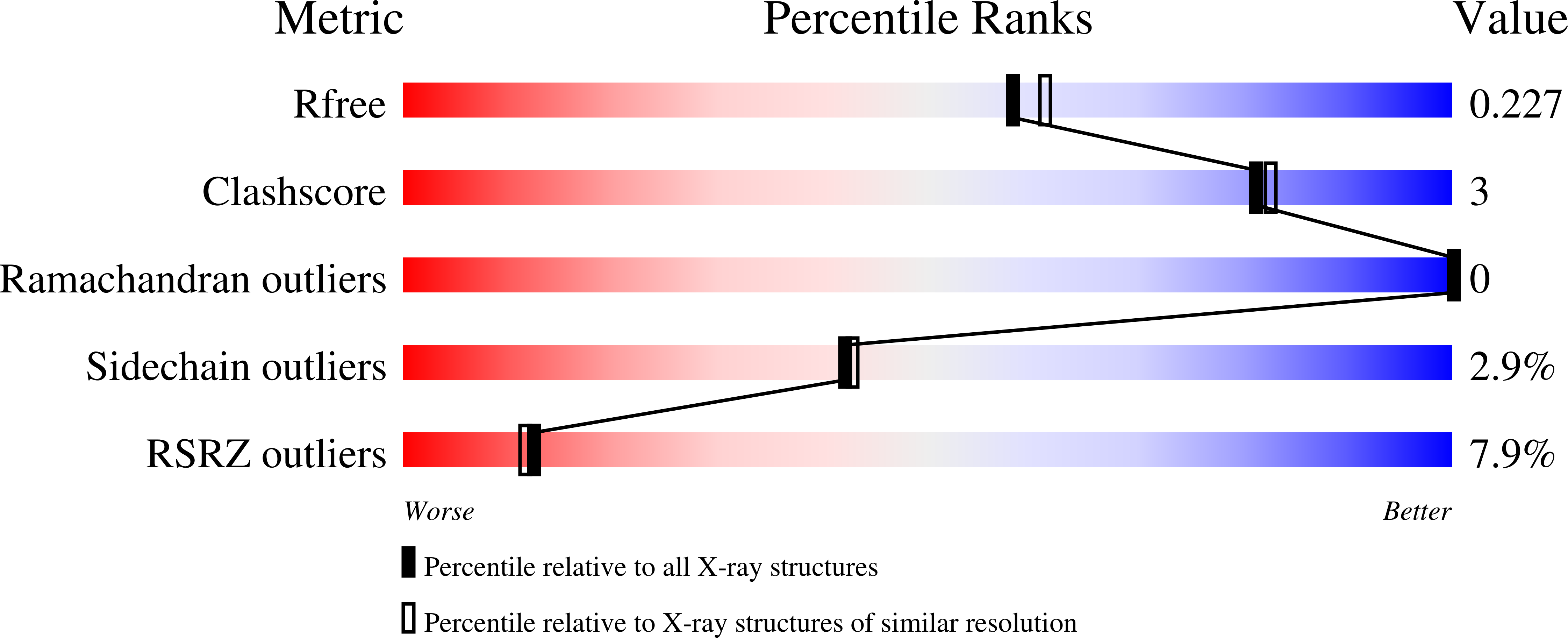Crystal Structures of Pasteurella multocida Sialyltransferase Complexes with Acceptor and Donor Analogues Reveal Substrate Binding Sites and Catalytic Mechanism.
Ni, L., Chokhawala, H.A., Cao, H., Henning, R., Ng, L., Huang, S., Yu, H., Chen, X., Fisher, A.J.(2007) Biochemistry 46: 6288-6298
- PubMed: 17487984
- DOI: https://doi.org/10.1021/bi700346w
- Primary Citation of Related Structures:
2IHJ, 2IHK, 2IHZ, 2ILV - PubMed Abstract:
Sialyltransferases are key enzymes involved in the biosynthesis of biologically and pathologically important sialic acid-containing molecules in nature. Binary X-ray crystal structures of a multifunctional Pasteurella multocida sialyltransferase (Delta24PmST1) with a donor analogue CMP-3F(a)Neu5Ac or CMP-3F(e)Neu5Ac were determined at 2.0 and 1.9 A resolutions, respectively. Ternary X-ray structures of the protein in complex with CMP or a donor analogue CMP-3F(a)Neu5Ac and an acceptor lactose have been determined at 2.0 and 2.27 A resolutions, respectively. This represents the first sialyltransferase structure and the first GT-B-type glycosyltransferase structure that is bound to both a donor analogue and an acceptor simultaneously. The four structures presented here reveal that binding of the nucleotide-activated donor sugar causes a buried tryptophan to flip out of the protein core to interact with the donor sugar and helps define the acceptor sugar binding site. Additionally, key amino acid residues involved in the catalysis have been identified. Structural and kinetic data support a direct displacement mechanism involving an oxocarbenium ion-like transition state assisted with Asp141 serving as a general base to activate the acceptor hydroxyl group.
Organizational Affiliation:
Department of Chemistry, University of California, One Shields Avenue, Davis, California 95616, USA.



















